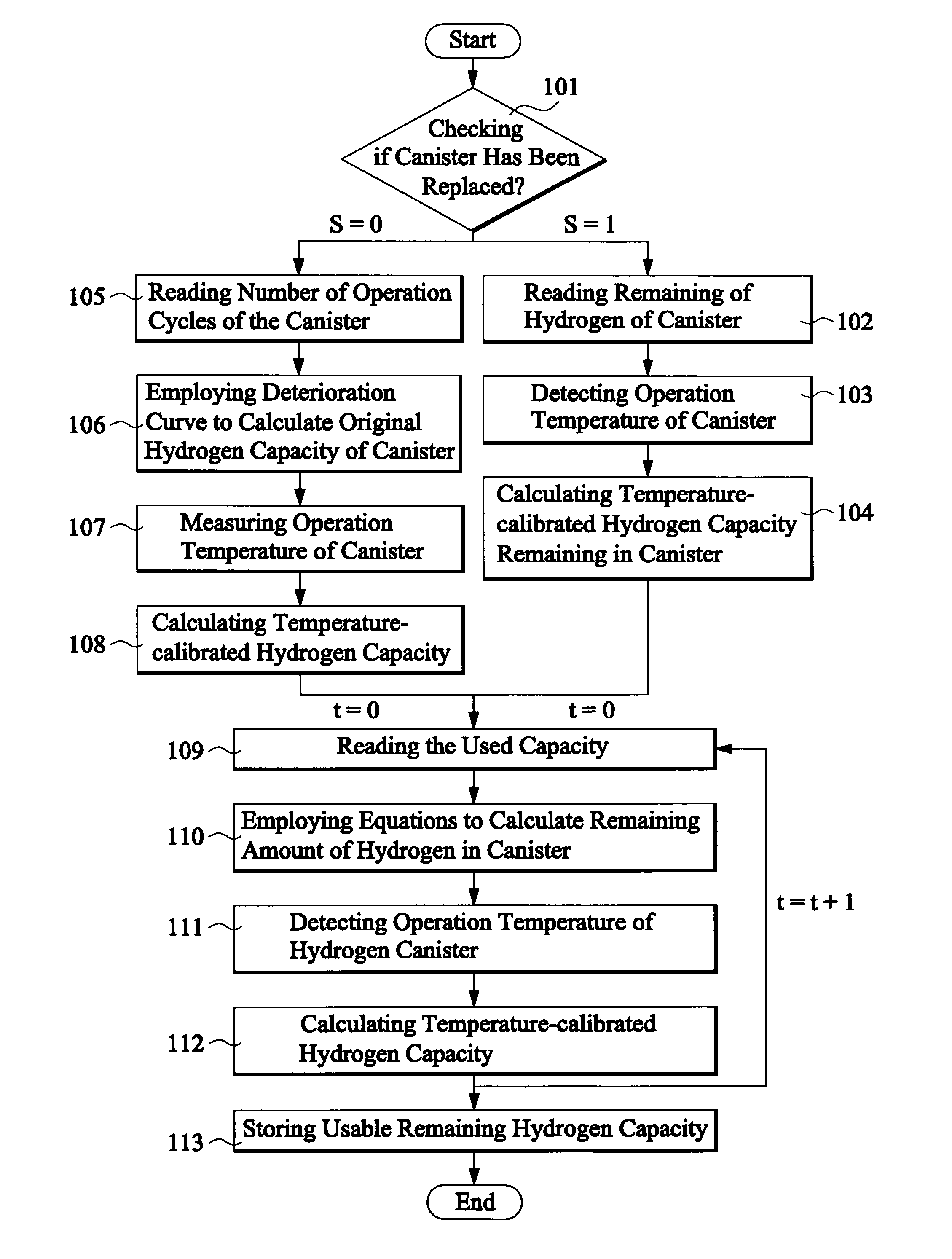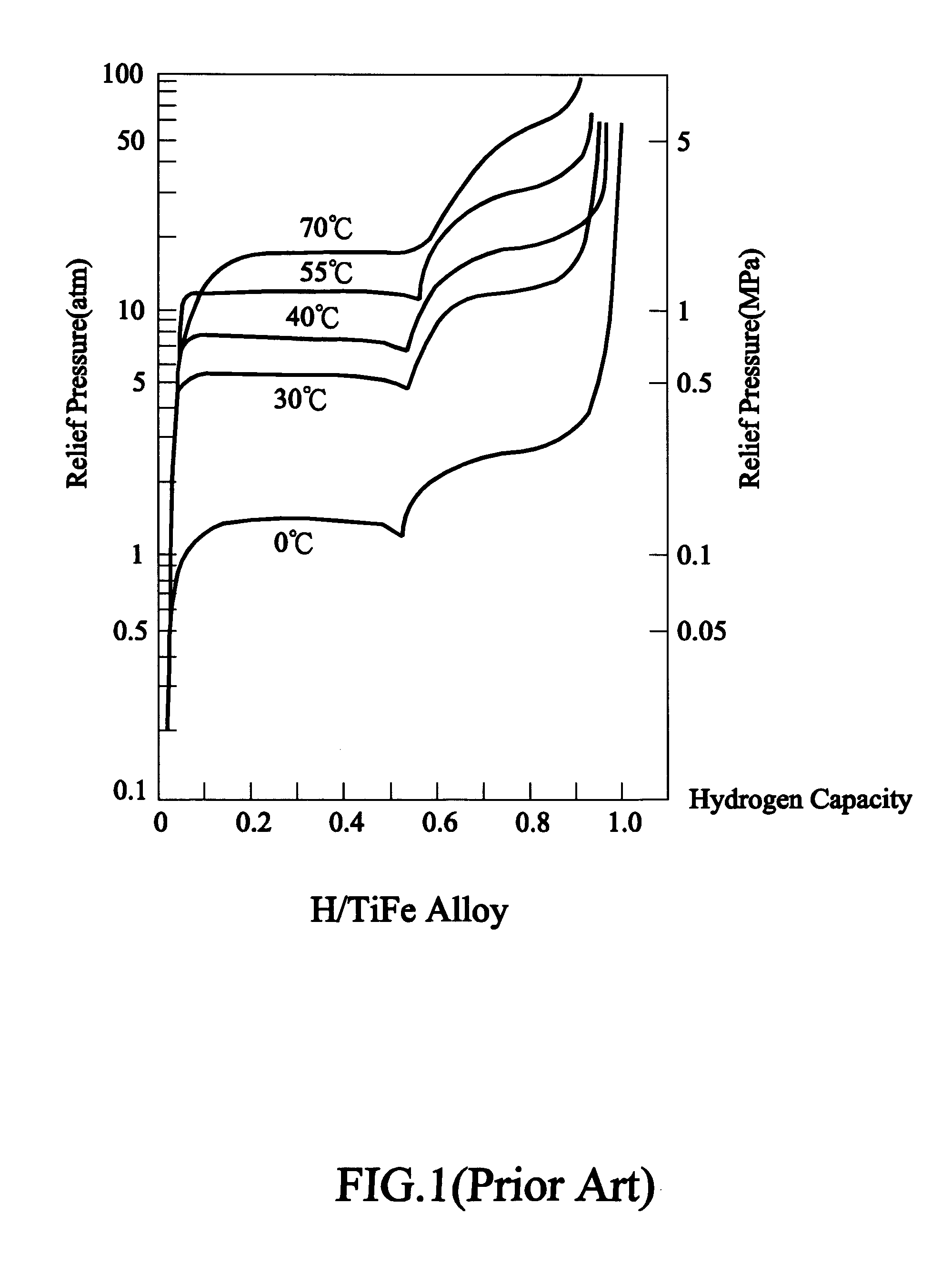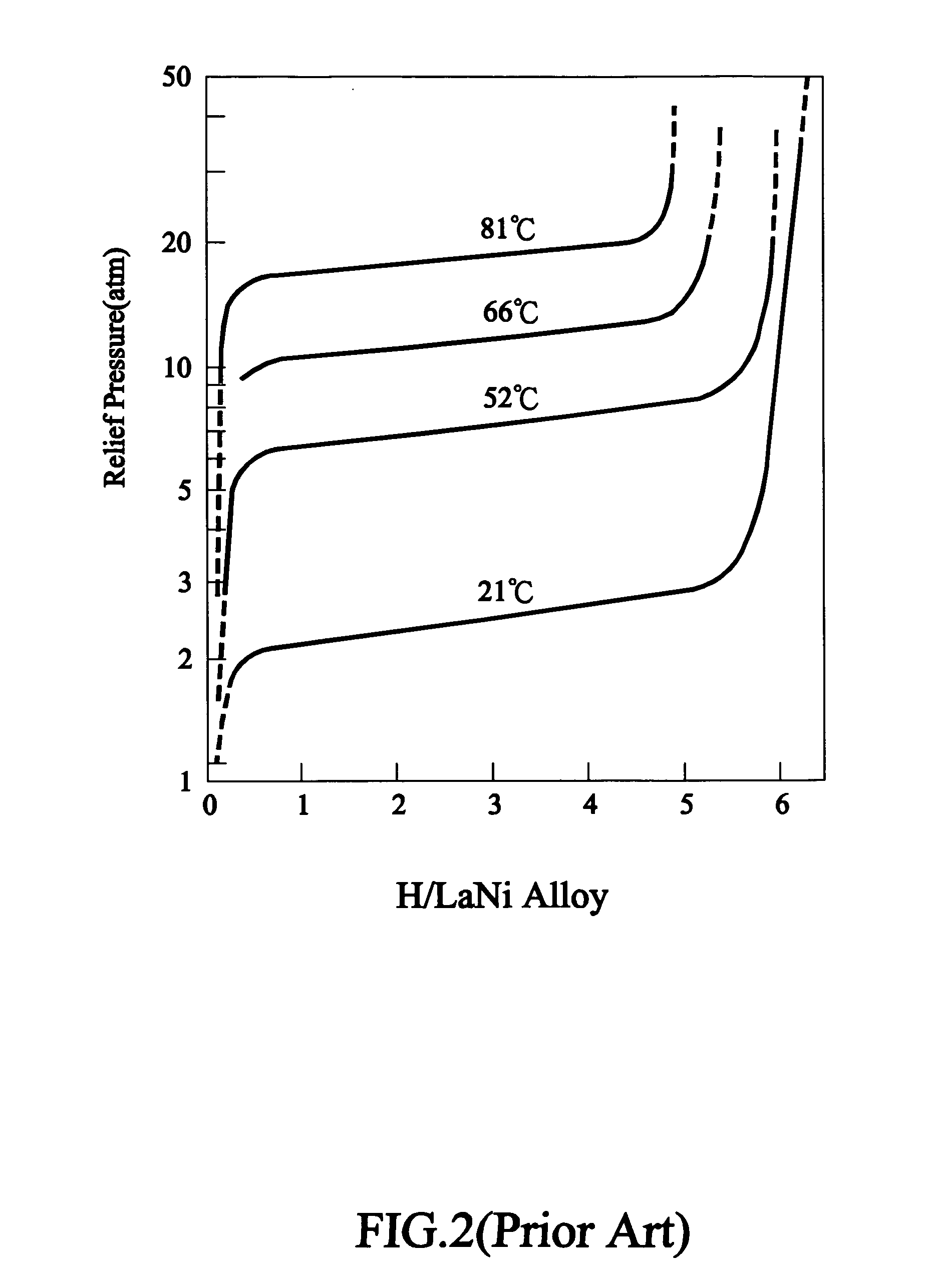Method for measuring remaining hydrogen capacity of hydrogen storage canister
a technology remaining hydrogen, which is applied in the direction of container discharge methods, instruments, packaged goods, etc., can solve the problems of inability to accurately measure the capacity change of hydrogen storage canister, inability to determine the hydrogen capacity, and complicated installation of weighing devices in the whole system, etc., to achieve convenient application in practical industrial operations, efficient and precise
- Summary
- Abstract
- Description
- Claims
- Application Information
AI Technical Summary
Benefits of technology
Problems solved by technology
Method used
Image
Examples
Embodiment Construction
[0022] Before explanation of the method for measuring the available remaining hydrogen capacity of a hydrogen storage canister in accordance with the present invention, the variation of hydrogen capacity of the hydrogen storage canister in actual applications is discussed first. Experiments have been performed, in which hydrogen storage canisters that are charged with hydrogen under fixed conditions are put in different operation temperatures and hydrogen is released according to hydrogen pressure and minimum hydrogen flow rate required by applications with the flow rate of hydrogen being read by mass flow meters whereby characteristic curves (see FIG. 3) of hydrogen flow rate and hydrogen pressure vs. time for actual applications can be obtained. In FIG. 3, curve C1 is a flow rate curve, and curve C2 is a hydrogen pressure curve. In this way, effective hydrogen capacity in different operation temperatures can be obtained, based on which, calibration can be performed to assess the a...
PUM
| Property | Measurement | Unit |
|---|---|---|
| temperature | aaaaa | aaaaa |
| time | aaaaa | aaaaa |
| pressure | aaaaa | aaaaa |
Abstract
Description
Claims
Application Information
 Login to View More
Login to View More - R&D
- Intellectual Property
- Life Sciences
- Materials
- Tech Scout
- Unparalleled Data Quality
- Higher Quality Content
- 60% Fewer Hallucinations
Browse by: Latest US Patents, China's latest patents, Technical Efficacy Thesaurus, Application Domain, Technology Topic, Popular Technical Reports.
© 2025 PatSnap. All rights reserved.Legal|Privacy policy|Modern Slavery Act Transparency Statement|Sitemap|About US| Contact US: help@patsnap.com



